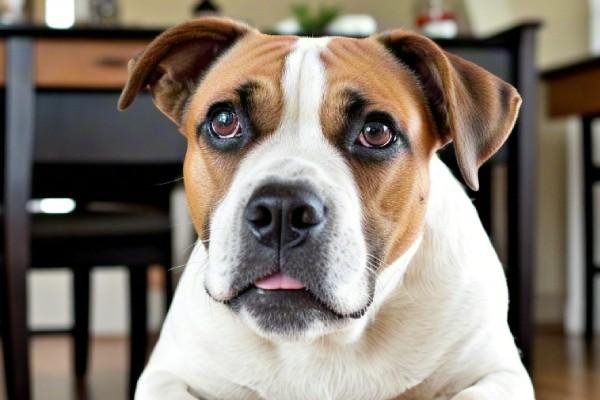If your dog is not eating, it can be concerning, and it's important to approach the situation with care. Here’s what you can do to assess and address the issue:

1. Evaluate for Stress or Changes
- Dogs are sensitive to their environment, so if there have been recent changes in your home, like a new pet, moving, or a change in your routine, this could cause stress and loss of appetite. Observe your dog’s behavior to see if stress could be a factor.
2. Check for Illness
- Loss of appetite can be a sign of an underlying medical issue. It could range from something minor like a stomach upset to something more serious like infections, kidney or liver disease, or dental problems.
- Symptoms to watch for: lethargy, vomiting, diarrhea, changes in behavior, or unusual drooling.
- If the lack of appetite persists for more than 24–48 hours or is accompanied by any other concerning symptoms, it’s best to consult a vet as soon as possible.
3. Inspect Their Food
- Dogs can be picky eaters sometimes. Consider if there is something off about their food, such as it being stale, spoiled, or unappealing. Try offering fresh food, or even a different type of food, like wet food if they typically eat dry.
- If you’ve recently switched foods, some dogs have a hard time adjusting to new diets, which can affect their appetite.
4. Try Enticing Flavors
- You can try tempting them with something special: add a bit of chicken broth, boiled chicken, or even some grated cheese on top of their food. This can stimulate their appetite, especially if they’re picky or sick.
5. Ensure They're Comfortable
- Check if there are any signs of pain, such as difficulty chewing or moving, which could make them reluctant to eat. Oral health issues like gum disease or a tooth infection are common culprits.
- Also, ensure that their eating area is quiet, calm, and comfortable—some dogs may avoid food if there’s too much noise or activity around them.
6. Monitor Hydration
- Even if they’re not eating, ensure they have access to clean, fresh water. Dehydration can make things worse, especially if they’re not eating for an extended period. If they’re not drinking either, seek immediate veterinary help.
7. Behavioral Causes
- If your dog is healthy but still refusing food, it might be due to boredom, training, or behavioral issues. Try hand-feeding, incorporating food puzzles, or offering meals at different times to break the monotony.
8. Consider Parasites or Infections
- Intestinal parasites or infections could affect appetite. If you notice any signs like bloating, lethargy, or irregular bowel movements, it’s time to consult a vet to rule out parasites or other infections.
9. Track the Duration
- Keep a log of how long the appetite issue lasts, any changes you observe, and other health symptoms. This will be helpful if a vet visit is necessary.
When to See a Vet:
If your dog’s refusal to eat lasts more than 48 hours, or if there are other concerning symptoms like vomiting, diarrhea, significant lethargy, or weight loss, it’s important to seek veterinary care promptly.
An experienced vet can run diagnostic tests, check for infections, or investigate other causes like organ dysfunction, hormonal imbalances, or even cancer. They can guide you in the best course of action and help your dog return to a healthy appetite.
If your dog is eating treats but not his regular food, it could be due to several reasons. Here are a few common ones to consider:
-
Picky Eating Habits: Some dogs can become picky eaters, especially if they’ve been given treats or human food that they find more appealing than their regular meals. If treats are high in flavor, fat, or smell, your dog might prefer them over the standard kibble.
-
Health Issues: If a dog suddenly stops eating its regular food, it could be a sign of health issues. Dental problems, nausea, or digestive issues can make eating uncomfortable, leading your dog to avoid food. Similarly, conditions like infections, gastrointestinal upset, or even pain might reduce appetite.
-
Food Preferences: Dogs can develop preferences for certain types of food, particularly if the food has changed (new brand, flavor, or texture). They may turn their nose up at the food if they don't find it as appetizing.
-
Overfeeding Treats: If your dog is being given too many treats throughout the day, it might not be hungry enough for its regular meals. Treats often contain more calories, so if your dog is full from treats, it might not feel the need to eat its main food.
-
Stress or Anxiety: Changes in routine, environment, or even stress from travel, loud noises, or separation anxiety can impact a dog’s appetite. If there’s a new addition to the family or any changes at home, your dog might eat less due to anxiety.
-
Spoiled Food: Make sure the food is fresh and stored properly. Dogs can be sensitive to spoiled or stale food, which can make them turn away from it.
What You Can Do:
- Try to create a consistent feeding schedule and remove treats between meals.
- Gradually introduce a new food if you suspect your dog is bored with their current diet.
- Consider offering some high-quality wet food, which some dogs find more appetizing than dry kibble.
- Monitor for any signs of illness, like lethargy, vomiting, or diarrhea. If symptoms persist, it’s always a good idea to consult with a veterinarian to rule out any underlying health issues.
Has your dog recently shown any other symptoms, or has this behavior been happening for a while?